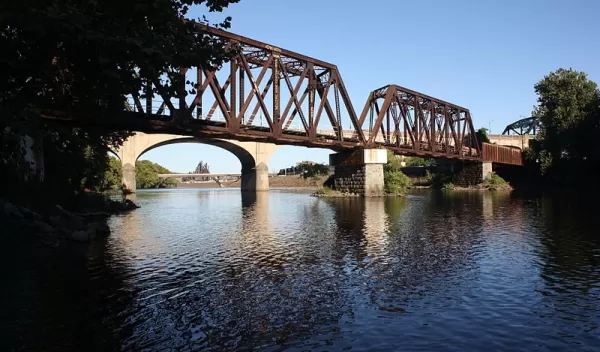
Predicting the impact of climate change on bridge safety
Climate change will ultimately affect our bridges. But to what extent?
That is the question addressed by NSF-funded research conducted by David Yang and Dan Frangopol of Lehigh University in a paper recently published in the ASCE Journal of Bridge Engineering.
"We know climate change will increase the frequency and intensity of natural hazards like hurricanes, heat waves, wildfires and extreme rains," says Yang. "We're looking at increased temperature as well as increased precipitation and their impacts on bridge safety. The challenge here was that we didn't know how to quantify those impacts to predict scour risk."
Scour is the primary source of bridge failure in the United States. It's created when floodwaters erode the materials around a bridge's foundation, creating holes that compromise the integrity of the structure.
Yang and Frangopol had to fill the gap between the climate data and the structural safety quantification.
"We took a holistic approach," says Yang. "It started with a global climate model that was downscaled to regional hydrology, then we used structural engineering to get the failure probability of a structure in a future flooding event. From that, we could assess, does this structure failure pose certain risks to a community? Our model included the four steps of climatology, hydrology, structural engineering and risk assessment."
It's the first paper that has combined all four steps to quantitatively look at the effect of climate change on bridges, he says.
"Our communities rely on civil infrastructure systems for their economic and social welfare," says Joy Pauschke, NSF program director for Engineering for Civil Infrastructure. "New methods like this will help the nation quantify the effects of changing climate on infrastructure, identify optimal life-cycle management strategies for civil infrastructure, and ultimately lead to better decisions."


